
Current Affairs is the most important area in all competitive exams. But the difficulty level is very high. That’s why; many aspirants get confused, how to select Current Affairs for Preparation of Competitive Examination? In this Post, Daily Current Affairs 3 June 2021, we have tried to cover each and every point and also included all important facts from National/ International news that are useful for upcoming competitive examinations such as UPSC, SSC, Railway, State Govt. etc.
Daily Current Affairs 3 June 2021
World Milk Day 2021

The World Milk Day is observed on 1 June each year to recognise the importance of milk as a global food. The main objective of this day is to focus on activities that are connected to the dairy sector.
The theme of 2021 will focus on Sustainability in the dairy sector with messages around the environment, nutrition and socio-economics.
World Milk Day was established by the Food and Agriculture Organisation (FAO) in 2001. The day is intended to provide an opportunity to bring attention to activities that are connected with the dairy sector.
India is the world’s largest milk producer. India accounts for over one-fifth of the global milk production. This is followed by the US, China, Pakistan and Brazil.
India produced 198.4 million tonnes of milk during 2019-20.
Value of output of milk is more than Rs 7.72 lakh crore during 2018-19 at current prices which is more than the value of output of wheat and paddy together.
Milk Production has grown at an average annual growth rate of 6.3% per year during last 6 years whereas world milk production is growing at the rate of 1.5% per year.
Percapita availability of milk has increased from 307 grams per person per day in 2013-14 to 406 grams per person per day in 2019-2020 that is y 32.24%.
100th anniversary of the raising of Army Educational Corps (AEC)
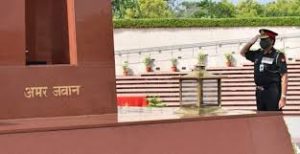
Indian Army celebrated the 100th anniversary of the raising of Army Educational Corps (AEC) on 01 June 2021.
History of the AEC dates back to 1921 when the mass scale of illiteracy amongst the Indian soldiers were prevalent.
Since then, many remarkable developments have seen AEC grow over the years adapting seamlessly to the rapid growth of education and technology as also the organisational needs.
The Army Education Corps of India is a program run by the Indian Army that develops soldiers and officers of all ranks in a variety of disciplines.
The centre provides education in both combat and non-combat operations. The Corps’ facilities are located in Pachmarhi, Madhya Pradesh.
Operational guidelines for Production Linked Incentive Scheme of Pharmaceuticals

The Department of Pharmaceuticals notified the ‘Production Linked Incentive (PLI) Scheme for Pharmaceuticals’ with an aim to enhance India’s manufacturing capabilities by increasing investment and production in the sector and to contribute to product diversification to high value goods in the pharmaceutical sector
The approved outlay of the scheme is Rs 15000 crore. The scheme envisages to create global champions out of India who have the potential to grow in size and scale using cutting edge technology and thereby penetrate the global value chains.
Based on a series of consultations with pharmaceutical industry and stakeholders in the Government, the operational guidelines for the scheme have been prepared and issued on 1st June.
The applications are invited in three groups based on the Global Manufacturing Revenue of FY 2019-20 of the applicants. A special carve out for MSMEs has been kept under the scheme.
All the applications will be submitted through an online portal maintained by SIDBI, the Project Management Agency for the scheme.
The eligible products have been categorized into three categories. The products covered under the scheme are formulations, biopharmaceuticals, active pharmaceutical ingredients, key starting material, drug intermediates, in-vitro diagnostic medical devices, etc.
The category-1 and category-2 products attract 10% incentive and category-3 products attract 5% incentive on the incremental sales. Incremental sales of a product mean sales of that product in a year over and above the sales of that product in FY 2019-2020.
Integration of GeM with the Railway e-procurement system

Minister of Railways, Commerce & Industry, Consumer Affairs and Food & Public Distribution Shri Piyush Goyal called upon Government e-Marketplace (GeM) to expand its scope and include more participants in GeM portal for public procurement of both Products & Services.
Interacting with the Officers of GeM and the department of Commerce, it should not only evolve as One-Stop shop for the requirement of all Central and State Government Offices as well as their PSUs, but also provide opportunities to MSMEs to showcase their products.
There has been fast growth in scale and impact of GeM. Its order value reached Rs 38620 crore in FY 2020-21.
There are over 52 thousand buyers and over 18.75 lakh sellers registered on the portal, dealing in 16,332 product catalogs and 187 service catalogs.
GeM started as the national procurement portal for “goods” and ”services” exclusively, but in accordance with the vision laid down in the Budget Speech of FY 2020-21, GeM is moving towards becoming a “Unified Procurement System” for goods, services as well as “Works Contracts”.
GeM is an online market place that was launched in 2016. The main objective of GeM is to ensure that public procurement of goods and services in India (done by government bodies) worth more than Rs. 5 lakh crore annually is carried out through the online platform.
MoFAHD chaired a virtual program on the occasion of World Milk Day
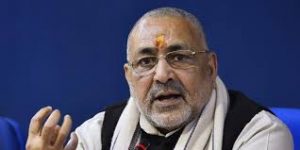
Union Minister for Fisheries, Animal Husbandry & Dairying, Shri Giriraj Singh chaired a virtual program organised on the occasion of World Milk Day.
The Minister announced the launch of the National Awards for the Cattle and Dairy sector, the Gopal Ratna Awards. The award has three categories –
- Best Dairy farmer
- Best Artificial Insemination Technician (AIT)
- Best Dairy Cooperative/Milk producer Company/ FPO.
He also announced integration of e Gopala App with UMANG platform so that 3.1 Crore users of Umang platform will get access to App.
e-GOPALA app (Generation of wealth through Productive Livestock), a comprehensive breed improvement marketplace and information portal for direct use of farmers, had been launched by Hon’ble PM on 10th September 2020.
RDSO becomes the FIRST Institution to be declared SDO under one

Indian Railways’ RDSO (Research Design & Standards Organisation) has become the FIRST Institution to be declared SDO under “One Nation One Standard” mission on BIS (Bureau of Indian Standards) which is Institution under Department of Consumer Affairs.
This unique initiative of two organisations under GOI is going to set a template for all the rest of leading research and standard development organisations in the country to follow and adapt World Class Standards.
RDSO, Lucknow, which is the sole R&D Wing of Ministry of Railways, is one of India’s leading Standard formulating Body undertaking standardisation work for railway sector.
RDSO took the initiative to seek recognition as a Standard Developing Organisation (SDO) under the BIS SDO Recognition Scheme.
In the process, RDSO reviewed its Standard Formulation procedures to realign them with the Best Practices of Standardisation, encoded in the WTO-TBT “Code of Good Practice” and also mandated by the Bureau (BIS) as essential criteria for recognition as SDO.
Litoria mira, the real life version of chocolate frog found

In the rainforests of New Guinea, a species of frog lives that looks like it has been made of chocolate. First spotted by an Australian scientist, Steve Richards, in 2016, noted that this frog could be a new species and is being considered as an addition to the knowns of the animal kingdom.
Some specimens have been taken for genetic tests and research on the cocoa-coloured frogs. The frogs are now called Litoria mira and the name has been inspired by the Latin adjective mirum.
Mirum means surprised or strange and the name fits perfectly for the new species of frog that have surprised scientists.
The frog species are considered a member of the predominantly Australian Litoria genus of tree frogs.
The Litoria mira has a well-known relative — the common green tree frog of Australia called Litoria cerulean. Except for the colour of their skins, the two seem alike — until you study them closely.
Litoria mira can be distinguished from all other Litoria by its unique combination of moderately large size, webbing on hand, relatively short and robust limbs, and small violet patch of skin on the edge of its eyes.
Expert Committee on Variable Capital Company submits its report to the IFSCA
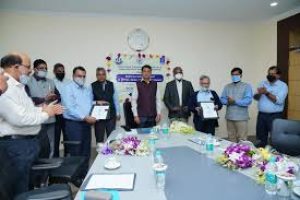
The expert committee on Variable Capital Company, headed by Dr. K.P. Krishnan, has submitted its report on the feasibility of Variable Capital Companies in the International Financial Services Centres to the Chairperson of the International Financial Services Centres Authority (IFSCA), Shri. Injeti Srinivas.
International Financial Services Centres Authority constituted a Committee of Experts to examine the feasibility of the Variable Capital Company (‘VCC’) in India to examine the suitability of the Variable Capital Company as a vehicle for fund management in the International Financial Services Centre in India.
The IFSCA set up this Committee to explore the potential for allowing another legal structure – popularly known as a variable capital company (VCC) – as an additional option through which asset managers could pool the investors’ funds.
The VCC structure dispenses with some of the key limitations of companies and LLPs and provides for higher regulatory standards than those applicable to trusts.
Fund management activities are an important pillar of the overall financial services ecosystem. In line with the mandate given to the Committee, it examined the relevance and adaptability of the VCC for the IFSC in India or alternative structures to attract fund business in the IFSC.
Conventionally, pooling of funds in India is undertaken through three types of entities, namely, limited liability companies governed under the Companies Act, 2013; limited liability partnerships under the Limited Liability Partnership Act; and trusts governed under the Indian Trusts Act, 1882.
Govt launches digitized versions of health schemes on NHA’s IT platform
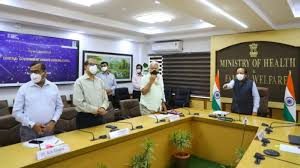
Union Health and Family Welfare Minister has launched the revamped Central Government Health Scheme (CGHS) and the Umbrella schemes of Rashtriya Arogya Nidhi (RAN) and Health Minister’s Discretionary Grant (HMDG) on National Health Authority (NHA)’s IT platform.
The CGHS is a comprehensive Health Scheme for Serving Employees, Pensioners, Members of Parliament, ex-MPs, etc., and their dependent family members.
During last 7 years it has expanded to 72 Cities with more than 38 lakh beneficiaries are covered under the scheme. Although CGHS started in 1954 in New Delhi, wherein till 2014 only 25 cities were covered.
CGHS retired pensioners are provided Cashless treatment at empanelled centres which will now be made seamless in the new platform.
e-referral module developed by NIC has enabled CGHS dispensaries and wellness centres to issue online referral to empanelled hospitals.
Govt introduced a New system of processing of the Insurance claims
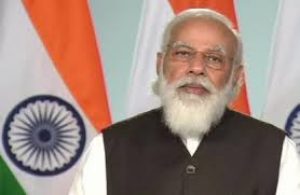
The Government of India has been on the forefront of the fight against COVID19 and has been supporting the efforts of States and UTs under the ‘Whole of Government” approach.
The Union Government had already extended the ‘Pradhan Mantri Garib Kalyan Package (PMGKP) Insurance Scheme for Health Workers Fighting COVID-19’ for one year.
This will continue to provide the safety net to the dependents of health workers, who are deputed to take care of COVID-19 patients.
The scheme is being implemented through an Insurance policy from New India Assurance Company (NIACL).
The scheme was initially launched w.e.f. 30.03.2020 initially for a period of 90 days. The insurance policy has been extended twice so far.
It aims to provide comprehensive personal accident cover of Rs. 50 lakh to all healthcare providers, including community health workers and private health workers drafted by the government for the care of Covid-19 patients and for those who may have come in direct contact of COVID-19 patients and were at risk of being impacted by it.
Initiatives around Compressed Bio Gas to give filip to SATAT scheme
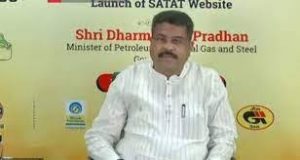
Union Minister of Petroleum and Natural Gas & Steel Shri Dharmendra Pradhan presided over a virtual ceremony in which a number of initiatives were launched to provide major fillip to the SATAT initiative, and help India leap ahead towards a greener tomorrow.
This included signing of a Cooperation Agreement by Oil and Gas majors including IndianOil, HPCL, BPCL, GAIL and IGL, for the promotion and development of the SATAT (Sustainable Alternative Towards Affordable Transportation) scheme.
The SATAT scheme aims to set up Compressed Bio-Gas production plants and make CBG available in the market for use as a green fuel.
‘SATAT’, launched on 1.10.2018, envisages to target production of 15 MMT of CBG from 5000 plants by 2023.
Besides the potential to boost availability of more affordable transport fuels, better use of agricultural residue, cattle dung and municipal solid waste, the 5000 CBG plants will provide an investment of 1.75 lakh crore, an additional revenue source to farmers, and 75,000 direct job opportunities and lakhs of indirect jobs.
Justice Arun Mishra takes over as NHRC Chairman
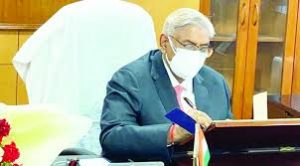
Justice Arun Kumar Mishra recently took over as the Chairman of the National Human Rights Commission (NHRC). Justice Mishra had retired from the Supreme Court in September 2020.
Justice Arun Mishra had enrolled as a lawyer in 1978 and was elected the youngest chairperson of Bar Council of India in 1998-99.
He was appointed judge of Madhya Pradesh High Court in October 1999. He later served as the Chief Justice of Rajasthan High Court and Calcutta High Court before being elevated to the Supreme Court on July 7, 2014.
The National Human Rights Commission (NHRC) of India is a Statutory public body constituted on 12 October 1993 under the Protection of Human Rights Ordinance of 28 September 1993. It was given a statutory basis by the Protection of Human Rights Act, 1993 (PHRA).
The NHRC is the National Human Rights Commission of India, responsible for the protection and promotion of human rights, defined by the Act as “Rights Relating To Life, liberty, equality and dignity of the individual guaranteed by the Constitution or embodied in the International Covenants and enforceable by courts in India”.





